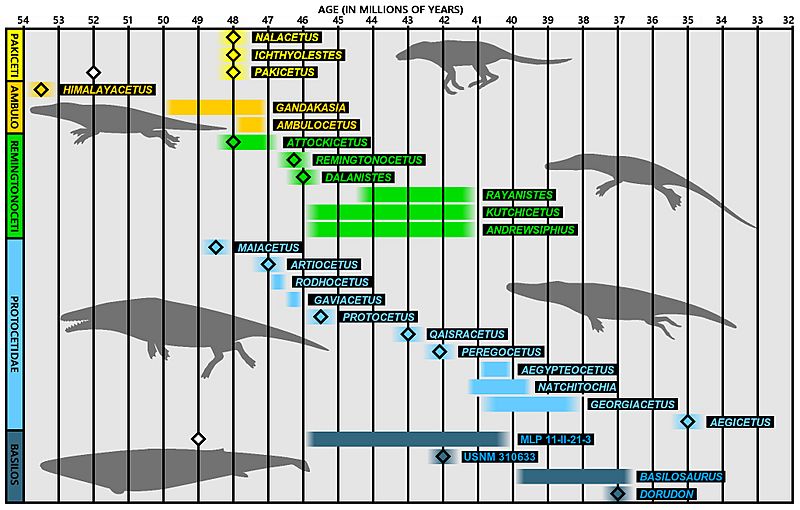Image: Archaeoceti geological ages 01

Description: Diagram showing age of different types of Archaeocetis. Most Archaeocetis (many of which is regarded as transitional forms between landliving ungulates and modern whales) seems to have lived contemporaneously, although scientists sometimes have came up with different ages of some genera. The lines shows how old the fossils are dated to be. When it is 2 thinner lines beside each other, it means that different studies have given different results. A. Pakicetus, dated to the Thanetian/Lutetian[1], alternatively Ypresian. B/C. Ambulocetus. Age of the fossils is debatable. It is found in the same formation as Pakicetus (Kuldana Formation), and are believed to be 2 million years younger (Carroll, 1997). If Pakicetus is abort 50 million years old, then Ambulocetus could be about 48 Million years. Some sources gives a date of 49 million years[2]. D. Rhodocetus. Dates of about 47-49 million years (P. D. Gingerich et.al. 1994). E. Himalayacetus from Ypresian [3] F. Dalanistes, dated to Ypresian-Batonian[4]. G. Kutchicetus. Dated to the Ypresian-Lutetian[5] H. Remingtonoetus (fond in India, dated to the Lutetian[6]). I. Georgiacetus, dated to be abort 40 million years old (early Lutetian)[7] J/K. Protocetus. Usually dated to the Midde Lutetian (45 million years), but some fossil evidence from Mokattam Formation point to an age towards the early Lutetian, according to Benton. L. Dorudon. Dates back to Lutetian-Bartonian [8] M. Basilosaurus/Zeuglodon. Early Bartonian[9]. References ↑ Paleodb.org on Pakicetus. ↑ English Wikipedia/Ambulocetus ↑ paleodb.org on Himalayacetus. ↑ paleodb.org on Dalanistes. ↑ paleodb.org on Kutchicetus ↑ paleodb.org on Remingtonocetus. ↑ livescience.com. ↑ Haines, Tim & Chambers, Paul. (2006) The Complete Guide to Prehistoric Life. Canada: Firefly Books Ltd. ↑ paleodb.org on Basilosaurus. External links [1].
Title: Archaeoceti geological ages 01
Credit: Own work
Author: Conty
Usage Terms: Creative Commons Attribution 3.0
License: CC BY 3.0
License Link: http://creativecommons.org/licenses/by/3.0
Attribution Required?: Yes
Image usage
The following page links to this image:

